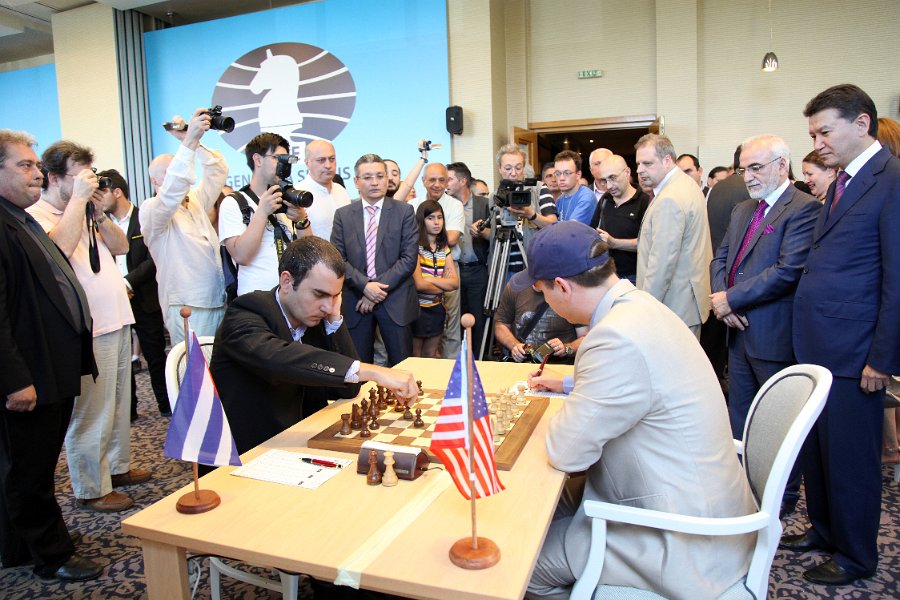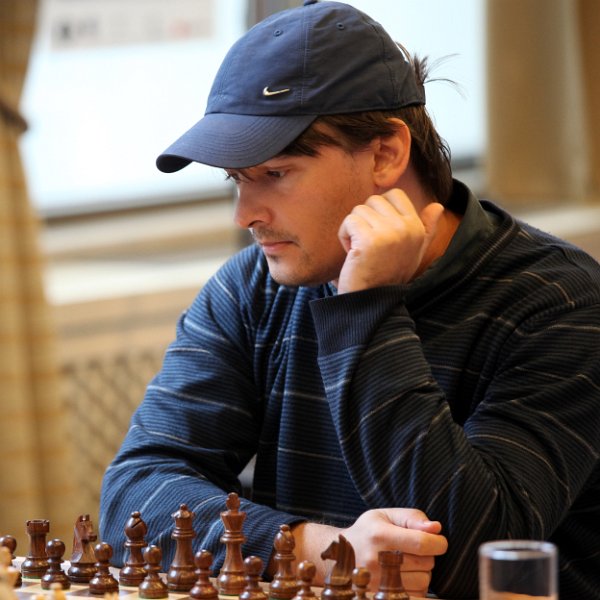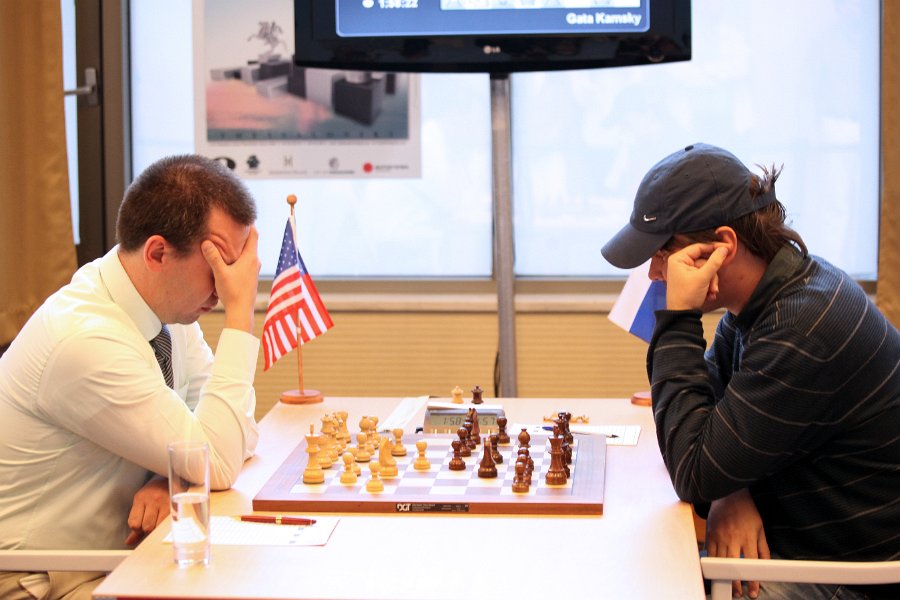On June 2, on his 39th birthday, Gata Kamsky defeated Russia's Alexander Morozevich at the FIDE Grand Prix tournament in Thessaloniki, Greece. The U.S. champion took a half point lead into the last round. But last games are often full of tension, the pressure rises and blunders are made. Could Kamsky hold onto his lead?
The game Kamsky-Dominguez attracted the attention of FIDE officials and local dignitaries.
Things were looking up for Kamsky already in the first game when he defeated Leinier Dominguez Perez. But the Cuban grandmaster didn't give up, chased Kamsky throughout the event and was right behind him. In the last round Dominguez beat Veselin Topalov of Bulgaria and won the first prize after Kamsky faltered and lost to Fabiano Caruana, an American who plays for Italy. This is a life-time achievement for Dominguez Perez.
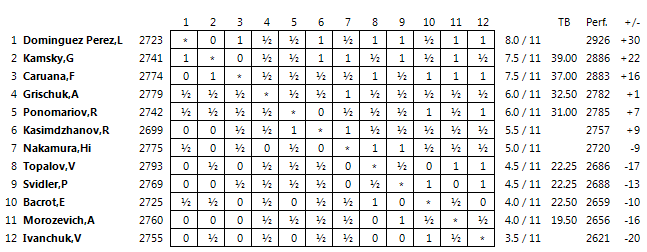
Many grandmasters have played several events in a row and seemed tired. Vassily Ivanchuk, Morozevich, Peter Svidler and Topalov lost considerable amount of rating points. The top-rated American Hikaru Nakamura also struggled.
The Game of Tension
When two thinkers clash, the tension is obvious. Dramatic moments increase with higher stakes, nerves take over and players are doing things we don't expect them to do. Poor decisions a mistakes creep in.
But there is also tension on the board, reflected in the interaction of the pieces. According to the former world champion Mikhail Botvinnik, chess is a game of exchanges. What is left on the chessboard is as important as what is taken off. The more pieces on the board, the more difficult it becomes to handle the tension.
Pawn play matters in the openings. Masters handle the pawn tension better than the amateurs, knowing how to keep the pawns on the board longer, when to block them and at what moment to get rid of them. Releasing the tension too soon may create problems.
Morozevich does not pay much attention to these chess rules. He goes his own way and we often find that he is on the right track. But surrendering the center against Kamsky in the Main line of Spanish didn't work. The American got space, lots of freedom, and was able to win a nice miniature.
Morozevich concentrates before the start of the game against Kamsky.
Kamsky - Morozevich
FIDE Grand Prix Thessaloniki 2013
1.e4 e5 2.Nf3 Nc6 3.Bb5 a6 4.Ba4 Nf6 5.0-0 Be7 6.Re1 b5 7.Bb3 d6 8.c3 0-0 9.h3 Na5 10.Bc2 c5 11.d4
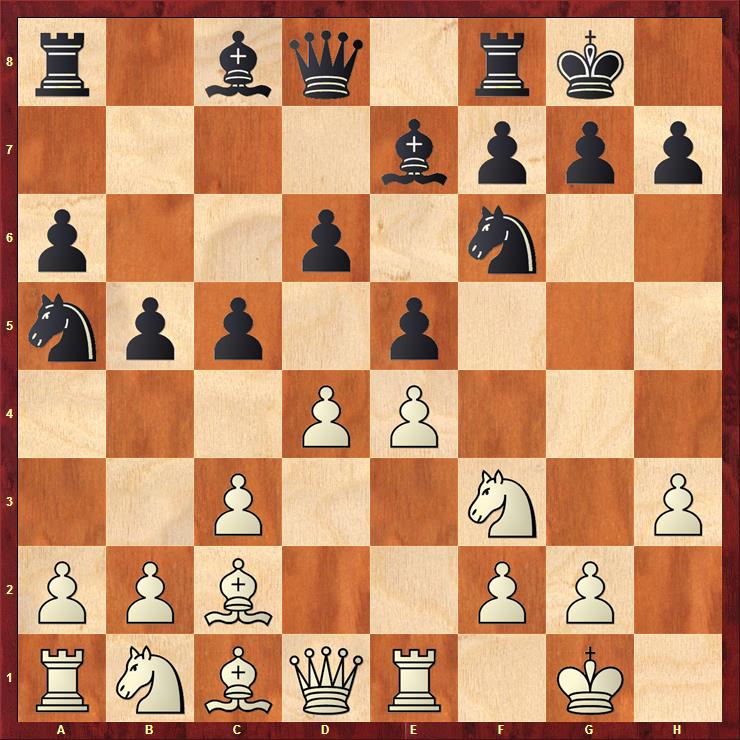
11...cxd4
For more than 100 years, the black defenders in the Main line Spanish sought out dynamic ways to fire up the clashes in the middle of the board. Morozevich goes for a complete release of the tension.
The old masters such as Mikhail Chigorin or Akiba Rubinstein knew something about keeping the tension in the center. Chigorin did it with 11...Qc7 although in the inaugural game against Oldrich Duras, Nuremberg 1906, he continued with the bizarre 12.Nbd2 Kh8?! 13.Nf1 Ng8?! and somehow won in 57 moves.
Rubinstein reacted better against Ossip Bernstein, Ostend 1907, with 11...Qc7 12.Nbd2 Nc6 and showed how to live in tight settings with his horses and other pieces once the pawn center was closed and white got more space: 13.d5 Nd8 14.Nf1 Ne8 15.a4 Rb8 16.axb5 axb5 17.g4 (17.b4 is better.) 17...g6 18.Ng3 Ng7 19.Kh1 f6 20.Rg1 Nf7 21.Be3 Bd7 22.Qe2 Ra8 and black equalized.
12.cxd4 exd4?!
Surrendering the center is against common sense, but Morozevich prefers to do things his way. Instead of the pawns, his active pieces may control the middle of the board. A kingside assault could be the price he has to pay, but for the moment it is not threatening.
13.Nxd4 Re8 14.Nc3 Bb7 15.Nf5
In general, the threatening knight on f5 can be best neutralized by placing the dark bishop on the square f8, according to the legendary David Bronstein. Instead of 15...Bf8, Morozevich seeks counterplay along the c-file.
15...Rc8
After 15...Bf8 the game Ivanchuk-Mueller, Mainz 2007, went 16.Bg5 16...h6 17.Bh4 Rc8 18.Rc1 Nc4 19.Qd4 Re6 20.Bb3 and now instead of 20...g6, black could have equalized with 20...g5 21.Bg3 d5. Something like this would be an ideal break for black.
Kevin Spraggett's 16.Qf3 is more tricky and can be best met by 16...Re6, for example 17.Bg5 h6 18. Bh4 g5 19.Bg3 Nc4, although after 20.Nd4 the black kingside has a few holes.
16.Bg5
After 16.Qd3 Nc4 17.Qg3 g6 is a sufficient defense.
16...Nc4
The computers suggest 16...b4!? to force the white knight off the center, although after 17.Na4 Bf8 18.f3 white has a small edge. After 16...b4!? white can try the wild 17.Ba4!?, for example 17...Rf8? 18.Nxe7+ Qxe7 19.Nd5 Bxd5 20.exd5 Qd8 21.Qd4 and white has a clear advantage; but after 17...bxc3! 18.Bxe8 Qxe8 19.e5 c2 20.Nxe7+ Qxe7 21.Qxd6 Qxd6 22.exd6 the endgame is roughly equal.
17.Qd4!
Triumph of centralization.
17...Nxb2
By taking the pawn, Morozevich loosens up the white pieces on the c-file. Unfortunately, he does it when Kamsky is about to close in on the black king. For what it's worth, it would have been better to include 17...h6 18. Bh4 before playing 18...Nxb2, although after 19.Re3!?, trying to swing the rook to g3, black has problems.
Also after 17...Ne5 18. Bb3 Bf8 19.Rad1 white has a dream position and is ready to cash in.
18.Bb3
The bishop leaves the c-file and Kamsky points another piece towards the black king. From a human perspective, that's fine. But ask some computers and the view changes quickly.
Amazingly, white can reach a winning position with an elegant knight leap 18.Nd5!, leaving the light bishop unprotected. The combination exploits the weakness of the back rank.
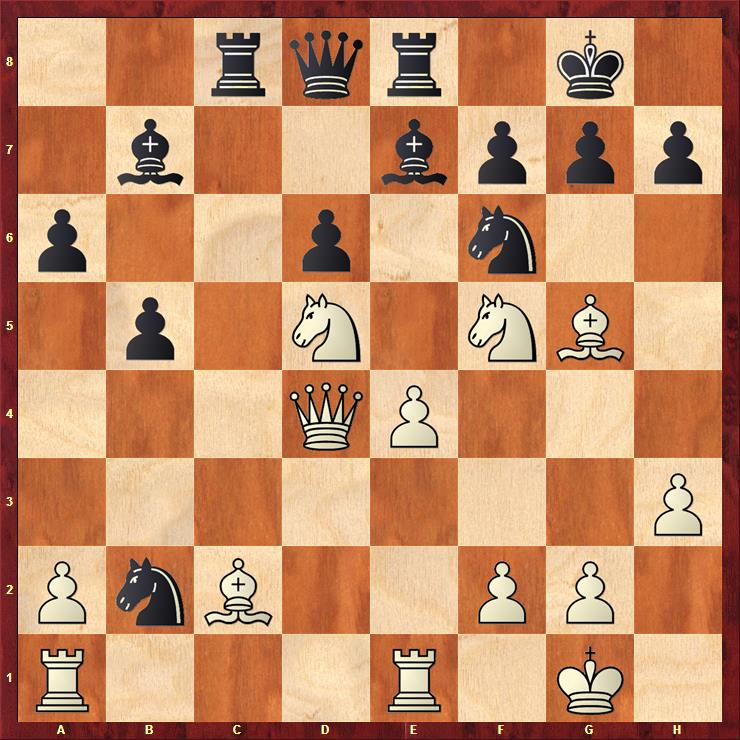
After 18...Bxd5 (In an obscure correspondence game, black took the bait and white quickly obtained a winning position: 18...Rxc2 19.Ndxe7+ Rxe7 20.Bxf6+-) 19.exd5 white includes his rook in the attack and the game could end beautifully:
A. 19...Rxc2 20.Rxe7 Rxe7 21.Bxf6 gxf6 22.Qxf6 Re1+ 23.Rxe1 Qxf6 24.Re8 mate.
B. 19...h6 20.Rxe7 hxg5 21.Rae1 Qa5 22.R1e2 Nc4 23.Qxf6!! gxf6 24.Nh6+ Kh8 (24...Kg7 25.Rxf7+ Kxh6 26.Rh7#) 25.Rxf7 and black doesn't have a good defense against Rf7-h7 mate.
18...Nc4 19.Rad1
Now after 19.Nd5?! Bxd5! 20.exd5 Ne5 the knight plugs up the e-file and black survives.
19...Qd7
After 19...h6 white gets a powerful attack with a bishop sacrifice: 20.Bxh6!? gxh6 21.e5!, for example:
A. 21...Nxe5 22.Rxe5! dxe5 23.Qh4 wins
B. 21...dxe5 22.Qh4 Qb6 23.Qg3+ Ng4 24.Nxe7+ Rxe7 25.Nd5 Bxd5 26.Qxg4+ wins.
C. 21...Rc5!? 22.Nxh6+ Kf8 23.Qh4 Rxe5 24.Rxe5 Nxe5 25.Nf5 Ng8 26.Qh7 Bf6 27.Nxd6 with white's edge.
20.Rd3
By lifting the rook to the third rank, white is ready to increase the fire power with 21.Rg3.
20...Bd8?
Morozevich finds a tricky defense against 22.Rg3, but Kamsky destroys him differently. The only way to stay in the game was: 20...Ne5!? 21.Rg3 Nh5 22.Nxe7+ Rxe7 23.Bxe7 Nxg3 24.Bxd6 Nc4 25.Bc5 and the bishop pair gives white only a slight edge.
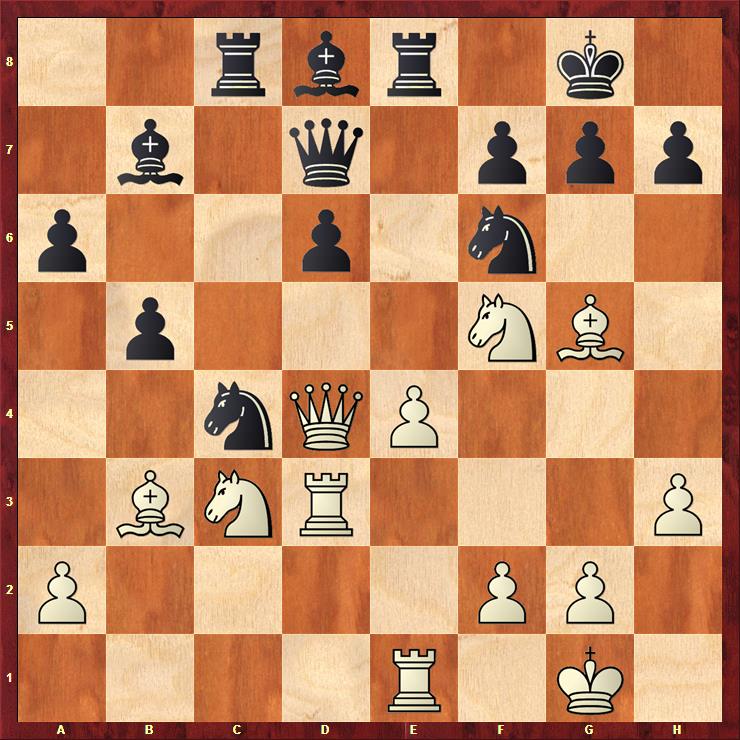
21.Nxg7!
Shattering the kingdom, the knight pseudo-sacrifice is the most precise way to victory.
After 21.Rg3 black survives with either 21...Qxf5 22.exf5 Rxe1+ 23.Kh2 Bb6 24.Qh4 Bxf2 25.Bxf6 Bg1+ 26.Kh1 Bf2+ with a perpetual check; or 21...Nh5 22.Be7 Ne5 23.Qxe5 dxe5 24.Nh6+ Kh8 25.Nxf7+ Kg8 26.Nh6+ draw.
21...Re5
After 21...Kxg7 22.Bxf6+ Bxf6 23.Rg3+ Kf8 24.Qxf6 white wins.
22.Nf5 Nxe4?!
Speeding up white's victory, but other moves don't help either:
A. 22...Bb6 23.Bxf6! Bxd4 (23...Qxf5 24.Rg3+ Kf8 25.Bg7+ Ke7 26.Qxe5+ Qxe5 27.Bxe5 dxe5 28.Nd5+ wins.) 24.Rg3+ Kf8 25.Bg7+ Ke8 26.Bxe5 Qxf5 27.exf5 dxe5 28.Ne2 and white should win.
B. 22...h6 23.Bf4! Bb6 24.Qxb6! Nxb6 (24...Rxf5 25.Bxc4 Rxf4 26.Bb3 Nxe4 27.Qd4! wins.) 25.Bxe5 Ne8 (25...dxe5 26.Rxd7 Nfxd7 27.Ne7+ wins.) 26.Rg3+ Kh7 27.Nxd6! and white wins the fight for the square g7 and the game.
23.Nh6+ Kf8 24.Bxd8 Rxd8
After 24...Qxd8 25.Nxe4 Qb6 26.Rf3! white wins, for example 26...Qxd4 27.Rxf7+ Ke8 28.Nf6+ Kd8 29.Rd7 mate.
25.f4!
Game over:
A. 25...Ree8 26.Qh8+ Ke7 27.Qxh7 Rc8 28.Nxf7 wins.
B. 25...Qe6 26.Nxf7 (26.fxe5 Nxc3 27.Qh4 f6 28.Rxc3+-) 26...Kxf7 27.fxe5 wins.
C. 25...Re6 26.Qh8+ Ke7 27.Nf5 mate.
Black resigned.
Note that in the replay windows below you can click either on the arrows under the diagram or on the notation to follow the game.
Images by Anastasiya Karlovich, FIDE Press Officer.

